If you have ever tried growing an Anthurium before, you would agree that they are pretty easy to grow but not as easy to maintain as the houseplants.
A growing environment that mimics the tropical rainforests is a must to maintain an Anthurium, and Anthurium Rotundistigmatum is no different.
Anthurium Rotundistigmatum grows best in bright, indirect light with slightly damp soil, not wet or soggy. Provide temperature between 20-26°C (68°F to 79°F), 70% humidity level, and monthly plant food at half strength.

It comes from a tropical wet climate at an elevation of 500-100 m, requiring a similar environment at home to witness a healthy plant.
Here is a guide to help you understand how to best care for Anthurium Rotundistigmatum and treat them for various problems.
Table of Contents
Overview of Anthurium Rotundistigmatum
Anthurium Rotundistigmatum is an intermediate tropical houseplant as it requires a moderate amount of care around the year.
It is a member of section Belolonchium and is best characterized by 28-40 cm long and 117-30 cm wide thin, ovate-triangular leaves.
It also gives out rich pale green with reddish texture blossoms and fruiting (berries) in the growing season.

Being native to the wet forests of Darién Province in Panama would require a growing environment close to Central American tropical forests.
Here is a brief guide describing the plant.
| Scientific Name | Anthurium rotundistigmatum |
| Native | Panama |
| Family | Araceae |
| Genus | Anthurium (Belolonchium) |
| Growth Zone | USDA 10 or higher |
| Plant Type | Evergreen |
| Growth Size | Over 20 inches tall |
| Growth Rate | Slow to Moderate grower |
| Foliage | Hourglass-shaped, large, deep-green leaves |
| Flowering | 8-13.5 cm pale green, reddish-purple Spathe |
| Fruiting | 25 cm long pendant styled bery |
| Toxicity | Toxic to Humans and Pets |
| Common Pests | Mealybugs, scales, aphids, and spider mites |
| Horticultural Diseases | Bacterial blight, leaf spot, and root rot |
Moreover, these Anthurium species effectively clean the indoor air of air-borne toxins like benzene or toluene, formaldehyde, carbon dioxide, and ammonia.
However, keep them away from your children and pets’ reach to avoid accidental poisoning.
Where to Buy Anthurium Rotundistigmatum?
Although Anthurium Rotundistigmatum is not a widely grown plant, you can still find a few batches in some specialized nurseries and online retailers.
The price would usually start from $50 and go over $150, depending on its size and condition
Here is a list of a few sellers who would be willing to offer you healthy, beautiful Rotundistigmatum plants.
| Where to Buy | Specification |
|---|---|
| Etsy | Find an assorted list of Anthurium Rotundistigmatum starting from $140. Pros: Expect to receive your delivery within 7-10 days. Cons: Not many items are available |
| Carnivero | It features a healthy Rotundistigmatum plant for sale starting at $65. Pros: Shipped throughout the US within 1-3 business days and return policy. Cons: Not many items are available |
| Unifolia.eu | It offers a wide range of Anthurium plants in a beautiful pot. Pros: Quick delivery and return policy Cons: Slight expensive and ships only within the EU |
| Ecuageneraus | It features a great many houseplants and ornamental plants at a reasonable price Pros: Reasonable price and local products Cons: No free shipping |
| Happy Hippie Plant Shop | Not much information available about shipping, delivery day, or return policy |
Anthurium Rotundistigmatum Complete Care Guide
Like any Anthurium plant, Rotundistigmatum requires a growing environment close to its tropical setting.
Here is a quick table describing the care guide for Anthurium Rotundistigmatum.
 8-10 hours of bright, indirect sunlight |  Regular watering for evenly moist soil |
 Perlite-based potting mix or orchid mix pH: 5.5 to 6.5 |  Phosphorus and nitrogen-rich plant food diluted every month in the growing season. |
 68°F to 79°F (20°C to 26°C) |  70% or more Humidity |
 Repot only when the root ball engulfs the soil |  Propagate via Stem cuttings and plantlets |
1. Diffused Sunlight and Suitable Location
Anthurium Rotundistigmatum naturally grows on the Panama forest beds around 500-1000 meters, covered by tall trees. Therefore, you should care to provide a similar setting at home.
Ensure to keep Anthurium Rotundistigmatum in diffused sunlight, such as a shady spot a few feet away from the window, door, or patio.

Pay special attention to its location as the direct sunlight can burn the leaves, and a drafty, low-lit place will slow down its growth.
However, optimal sunlight is a must to attain deep green leaves.
Note: About 75-80% or at least 6-8 hours of indirect sunlight would suffice to keep the plant looking green.
Tips to Provide Adequate Sunlight
- Find a well-lit spot with adequate indirect sunlight: patio, door, and window that gets some early morning sun.
- The east-facing window will be an ideal spot as it receives ample early morning sunlight.
- Alternatively, place them close to the north-facing or west-facing window.
- Ensure to keep them 5-6 feet away when placed at the south-facing window to avoid direct sunlight.
- Rotate your plant every few weeks at the same spot to ensure even growth on each side.
- Consider placing the plant under appropriate LED grow light when the sunlight seems scarce or insufficient, especially in fall and winter.
Light color spectrum and intensity play an essential role in a plant’s growth. Read our article about the best color light for plant growth?
2. Regular Watering
Anthurium Rotundistigmatum enjoys evenly moist soil, but it does not tolerate sitting in a pool of water.
The basic rule of watering your Anthurium is to wait until 70% of the topsoil or top two inches to dry out.
Provide 300-500 ml water every 4-5 days to let the soil dry out between watering to Anthurium Rotundistigmatum. Otherwise, water once every week with 700-800ml water.
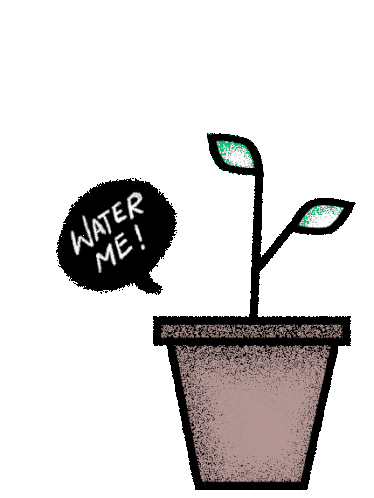
This watering schedule would only apply in the growing season (spring and summer). Cut back on watering in fall and winter to once every 15 days.
Anthurium Rotundistigmatum can slightly tolerate drought conditions significantly when the temperature exceeds 95 degrees Fahrenheit.
However, an extended dry period will cause excess transpiration (water loss) and slow down its growth.
| Overwatered Plant | Underwatered Plant |
|---|---|
| Yellowing, limping, and droopy foliage | Wilted and crispy leaves |
| Decayed lower roots | Brown leaf edges |
| Slowed plant growth | Curled and browned leaves |
| Root Rot | Stunted foliage growth |
Tips to Provide Adequate Watering
- Inspect whether the top 25% of soil or about 2-inches of the topsoil is dry.
- Use a soil moisture meter or insert your finger to inspect the soil condition
- Immediately water the plant if it seems dry; otherwise, wait for a few more days.
- Run the container under the tap and let it sit until all the water comes out of the drainage holes.
- Cut back on watering when you catch overwatered symptoms, including brown soil, decayed stems, and mushy roots until it revives.
- For severely dehydrated Anthurium, deepwater the plant to moisten the soil or place it on a pebble tray filled with cool water.
- Whenever watering, care to use distilled or rainwater water kept at room temperature to avoid chemical build-up in the soil.
3. Ideally Warm Temperature
Anthurium Rotundistigmatum thrives well in USDA hardiness zones ten or above. They enjoy ideally warm and humid conditions around the year as it mimics the natural Panama lowlands.
Ensure to keep the temperature anywhere from 68°F to 79°F (20°C to 26°C) during the day and nothing less than 60°F at night for Anthurium Rotundistigmatum.
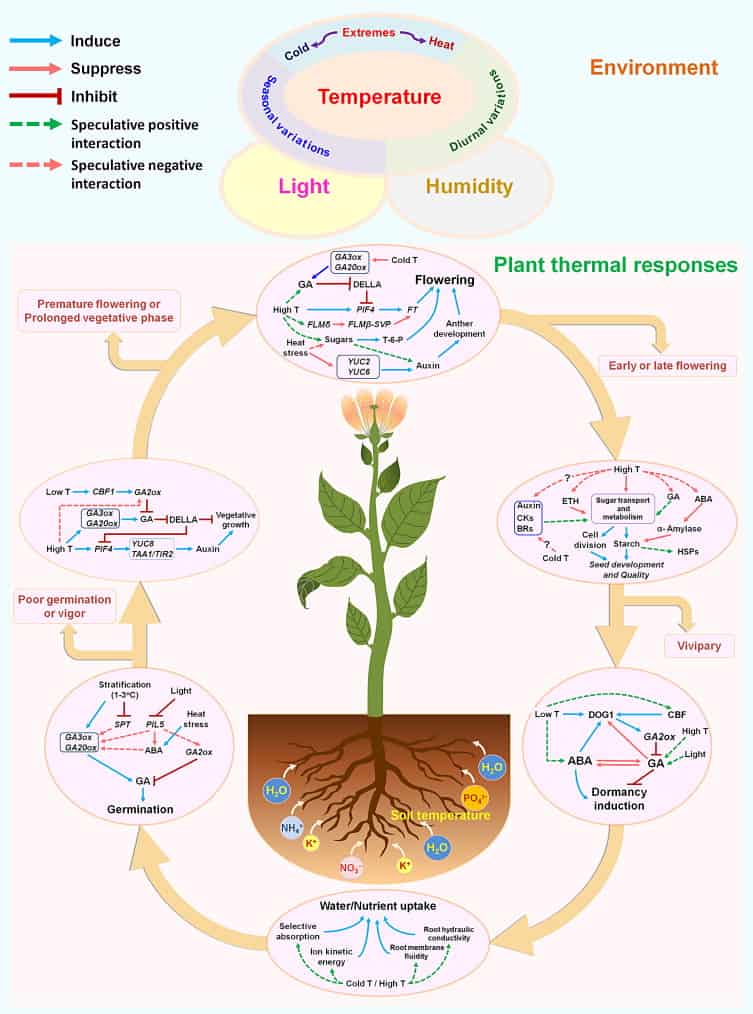
When you notice droopy leaves and stems, you should know it is too cold, and dried, crispy leaves mean it is overly hot.
Although it can survive well up to 90°F, especially in summer, prolonged drought can push back the plant growth.
Tips to Ensure Optimally Warm Temperature
- Keep your Anthurium close to the window where it receives a lot of filtered, diffused sunlight.
- Mist the plant leaves to increase humidity when the temperature rises above 90°F.
- Move them inside under LED grow light when the temperature drops below 60°F.
- Consider covering the plant with a frost blanket or plastic bag to prevent cold drafts in winter.
- Otherwise, placing a heating pad under the plant will help keep the soil temperature optimal.
Pro Tip: Avoid placing your Anthurium in front of the heater or air conditioner to avoid extreme temperatures.
4. Highly Humid Condition
Anthurium Rotundistigmatum prefers slightly high humid levels to maintain upright stems, even growth, and rich green leaves.
Provide about 70% humidity to Anthurium Rotundistigmatum that would naturally mimic wet tropical forests.
When the humidity level drops, the plant growth will simultaneously slow down. A low humid condition is a significant concern for Anthurium plants as they quickly lose water from their leaves.
On the other hand, too much humidity can invite diseases and fungus to the plant. Here is an image highlighting the low and high humid conditions.
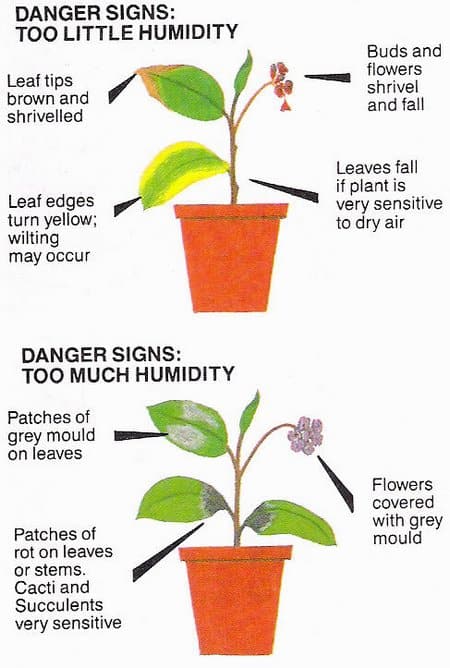
Tip to Maintain High Humid Condition
- Huddle all the plants together in a room to naturally boost the humidity level.
- Alternatively, add an electric humidifier to increase or decrease the humidity level.
- Misting the leaves occasionally in summer will help increase humidity in the air.
- Otherwise, place your plant on a pebble tray filled with water to keep the soil cool and moist.
However, beware of extreme humid conditions as Anthurium are susceptible to bacterial and fungal infestations.
One way to avoid the onset of the disease is to inspect the plant regularly and quarantine it.
5. Fast Draining, Organic Soil Mix
Anthurium Rotundistigmatum ideally enjoys an organic soil mix that drains quickly to avoid excessively wet soil.
The advantage of such a mix is that your plant will retain enough moisture before the soil dries out.
Provide an organic potting mix based on perlite, peat moss, and regular potting soil to keep the mix well-aerated.
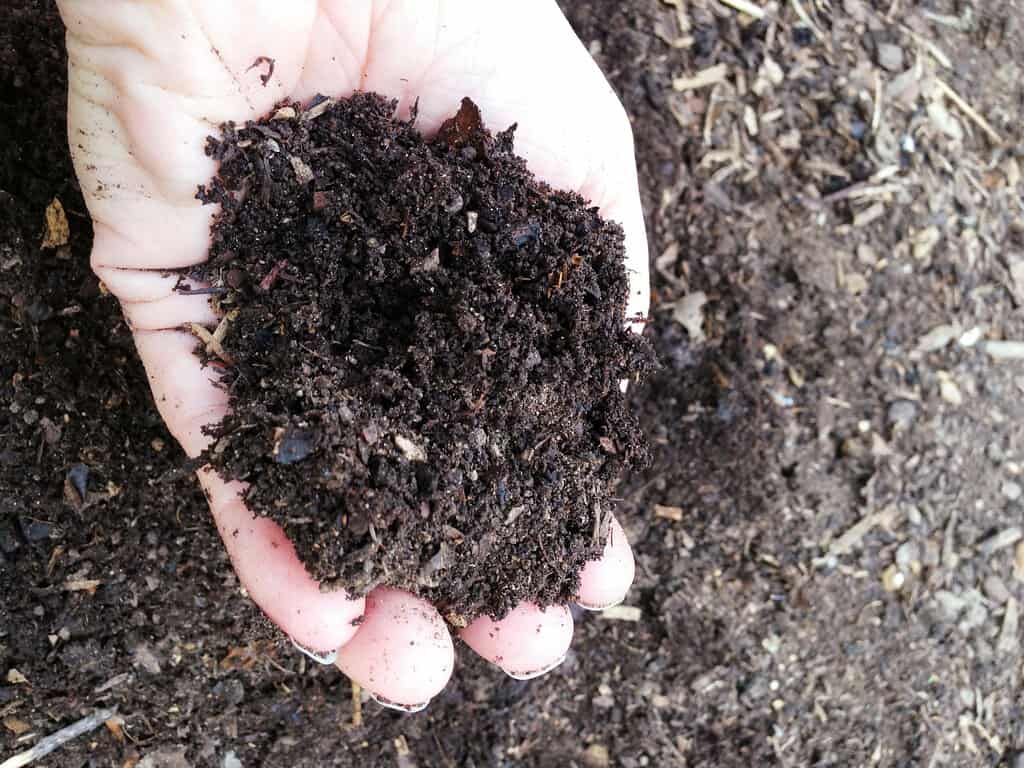
Adding some coco coir and orchid bark will help retain moisture for a prolonged duration. One way to obtain an ideal potting mix is to get a commercial mix from the market.
Here are a few recommendations;
However, commercial mixes usually contain more soil, retaining more water and later compaction.
Hence, the best solution is to prepare a homemade mix, and here is how to do it.
- Add one part of perlite with the same part of peat moss and potting soil
- Mix half part coco coir and orchid bark
Alternatively,
- Mix two parts of orchid mix with one part of activated charcoal and a mix of perlite and peat.
6. Monthly Fertilization
Anthurium enjoys regular fertilization in the growing season, but you must remember how to apply the fertilizer best.
Provide mild plant food rich in phosphorus to Anthurium Rotundistigmatum once a month or dilute the solution to 1/4 strength before applying.
Keep the fertilization to the active growing season, spring and summer, and immediately cut back in fall and winter as the plant goes into dormancy.
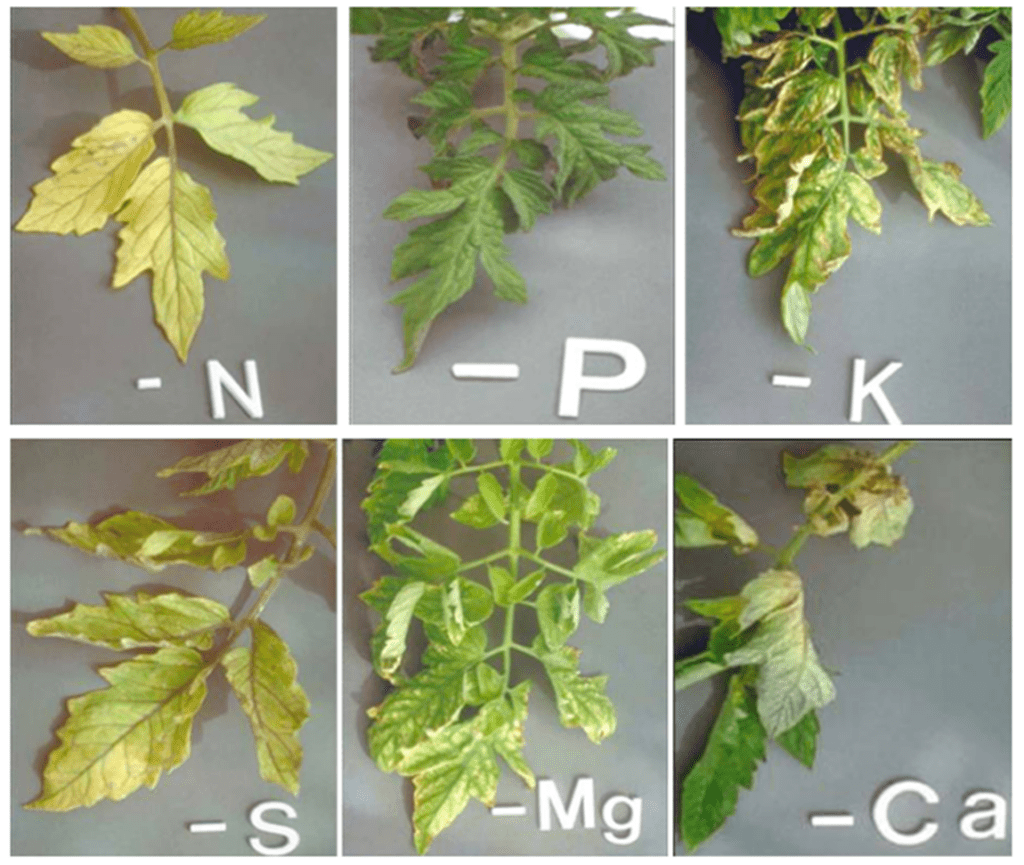
Furthermore, you must remember that Anthuriums do not withstand too much potassium but love phosphorus to grow flowers and fruits.
An overfertilized Anthurium will begin exhibiting changes such as yellowing and drooping foliage, stunted growth, and burned vegetation.
On the other hand, the plant not receiving enough Nitrogen and phosphorus will mainly indicate yellowing leaves, dropping blossoms, and a sick-looking plant.
Tips to Fertilize Anthurium Rotundistigmatum Properly
- Use plant foods rich in Phosphorus and Nitrogen than Potassium.
- Choose a slow-release granular fertilizer or liquid-based plant food.
- Ensure to dilute the solution to 1/4 strength by mixing in water using the liquid-based fertilizer to prevent burns and salt residue.
- Moisture aids in nutrient uptake. So, I recommend watering the plant before fertilizing it.
- You can remove excess salts from the pot by soaking it in lukewarm water.
Here are a few recommendations;

Pro Tip: Organic fertilizers work great, too, including eggshells, chicken/fishbone, or vegetable leftovers.
7. Growth Rate and Pruning
Anthurium Rotundistigmatum is your typical tropical sub-plant with lush green leaves that become larger than the plant.
A member of Belolonchium, it boasts thin, ovate-triangular leaves that spread 26-56 cm long and 17-30 cm wide.
It is broadest at the point of petiole attachment with the anterior lobe.

The upper surface may turn from matte to semi-glossy, depending on the time of the year.
Like most Anthurium, it blossoms every year in late spring or summer, where you would notice a pale green to reddish-purple spathe.
It usually turns reddish brown with time, and the size varies from 8 to 13.5 cm long.
The Anthurium will give out beautiful berry-like fruit about 25 cm long in an obvoid, rounded shape if you are lucky.

However, Anthurium Rotundistigmatum does not require frequent pruning except for dead, decayed, and old leaves.
8. Repotting Anthurium Rotundistigmatum
Anthurium Rotundistigmatum would only require repotting every couple of years to retain upright shape and timely root growth.
They are slow-to-moderately growing plant that need repotting once every two years.
Check for visible signs of slowed growth or roots growing out of the drainage holes to consider repotting.
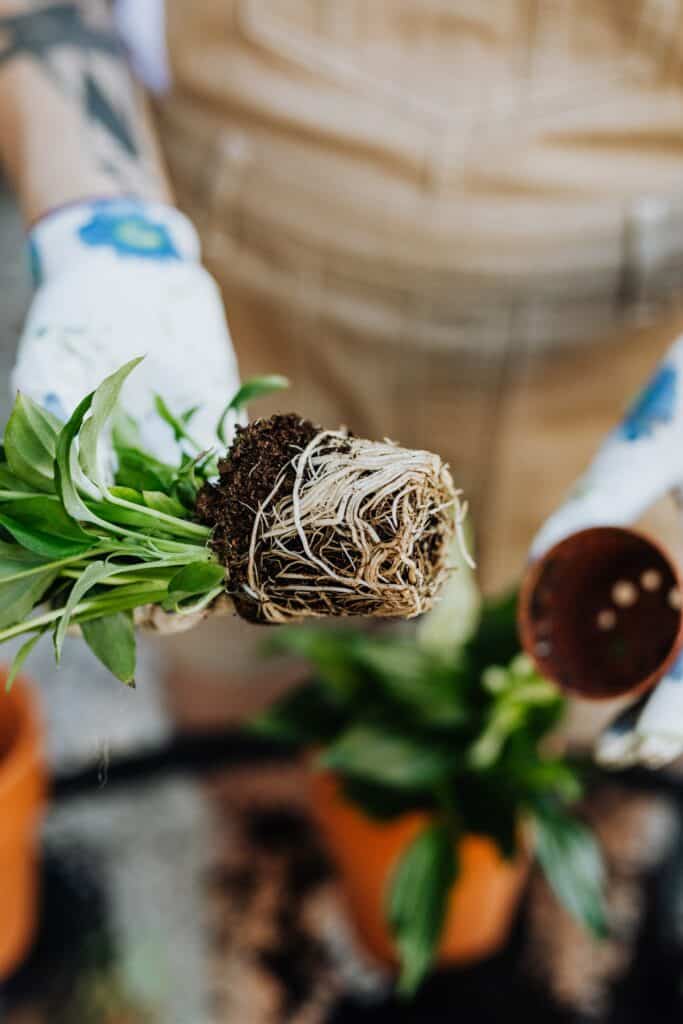
Step to Repot an Anthurium Rotundistigmatum
Here is a step-by-step guide for repotting your favorite plant.
Step 1: Choose a New Planter
- Consider getting a new pot at least 2-inches bigger than the previous one.
- Choose a pot preferably made from clay, ceramic, or terracotta.
- When choosing a plastic pot, ensure it has enough drainage holes underneath.
| Container | Specification |
|---|---|
| Classis Planter (Plastic) | They are durable and lightweight. The drainage holes lie at the bottom |
| LE TAUCI Ceramic Plant Pots | 4+5+6 inch, Set of 3, Planters with holes in the bottom |
| Plastic Planter, HOMENOTE | Comes in five different sizes 7/6/5.5/4.8/4.5 Inch |
Step 2: Transplant the Plant
- Prepare an ideal potting mix following the guide mentioned before and fill the pot to on-third
- Slide-out the plant from the current pot and gently shake it to lose the soil.
- Inspect the roots for visible signs of rot, such as dark, mushy, and smelly roots.
- Cut the infected parts and apply fungicide to the cut end before transplanting.
- Now, place the plant in the new container with roots facing downwards and fill the rest of the container with the same potting mix.
- Thoroughly water the pot to moisten the soil and let it sit in the exact location.
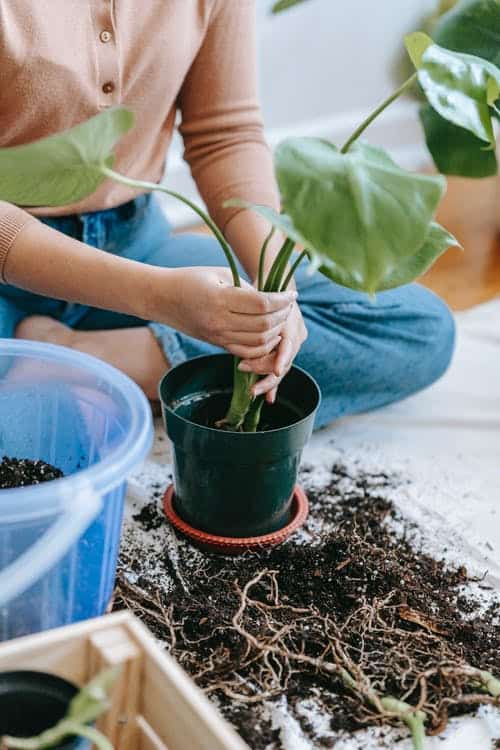
Toxicity of Anthurium Rotundistigmatum
You should be worried about plant poisoning from Anthurium Rotundistigmatum because every Anthurium plant is known to be toxic.
Every part of the Anthurium plant contains calcium oxalate crystals that will cause poisoning when touched or ingested.
It mainly troubles the oropharynx, leading to oral irritation and other health issues, such as:
- Drooling
- Pawing at the mouth or face
- Oral discomfort
- Appetite decreases
- Vomiting
- Swollen lip and tongue
- Heavy breathing, etc.
The skin contact often causes a burning sensation, irritation, and rashes.

Get in touch with the American Association of Poison Control Center at (800) 222-1222 immediately if you suspect poisoning in children.
For pet poisoning, contact ASPCA Poison Center at (800) 426-4435.
Propagating Anthurium Rotundistigmatum
Luckily, you can propagate Anthurium Rotundistigmatum quickly at home. Moreover, you can multiply this beautiful plant using healthy stem cutting or plantlets.
Propagating via seeds is also possible, but you must ensure to get berries from the fruiting after pollination and plant them in a germination tray like growing any other seedling.
Here are two popular ways to propagate Anthurium Rotundistigmatum.
1. Propagation via Stem Cuttings
Propagating the stem-cutting is the easiest way to go with Anthurium.
In early spring, you need to obtain healthy stem cutting to begin the propagation process.
Here is how to go ahead with it.
- Inspect your plant for healthy stem cuttings. An upright stem with one to two large leaves would suffice.
- If you notice aerial coming from the bottom node, select it for the high chances of propagation.
- Take a sharp knife or pruning shear to cut the stem below the bottom node.
- Ensure the freshly cut stem has at least two nodes and one leaf attached.
- Take a glass of water set at room temperature and add some rooting hormone dropping.
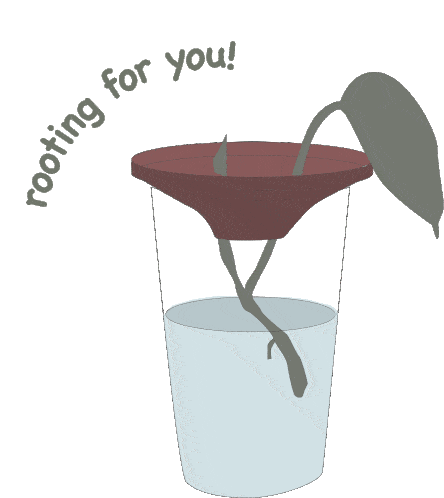
- Next, insert the cutting into the glass and keep it in a warm location.
- Change the water every five days to avoid fungal or bacterial growth.
- Alternatively, take a small pot and the potting mix to propagate directly in the soil.
- Before transplanting the stem cutting, apply some rooting hormone to the cut end.
- Immerse the cutting into the soil with leaves staying outside, moisten it, and leave the cutting in a warm location.
- Cover the cutting with a clear plastic bag to encourage high humidity and warm condition.
Voila! Your stem cuttings will begin growing new feeder roots within a few weeks.
2. Propagation via Plantlets
- Rooting plantlets is another way to go with propagating Anthurium Rotundistigmatum unless it is a relatively new plant.
- The plantlets are attached to the mother plant’s stem that you can easily cut off for propagation.
- Take a pruning shear and cut the plantlet from the mother plant without damaging the main stem.
- Next, prepare a potting mix in a new pot.
- Trim the plantlet off any yellowing, rotting, or damaged sections.
- Nicely place the plantlet in the potting mix and provide a similar growing condition to witness a healthy growth within a few weeks.
Read more about how to propagate Anthurium plants.
Common Problems with Anthurium Rotundistigmatum
Sooner or later, you will encounter problems with your Anthurium Rotundistigmatum, ranging from plants pests to horticultural diseases.
It is wise to learn about them before they become serious problems.
1. Common Pests
Anthurium, a tropical houseplant, is susceptible to common sucking pests that infest its juicy stems and leaves.
Mealybugs, aphids, spider mites, scales, and thrips are some of the common pests that attack the Anthurium Rotundistigmatum.
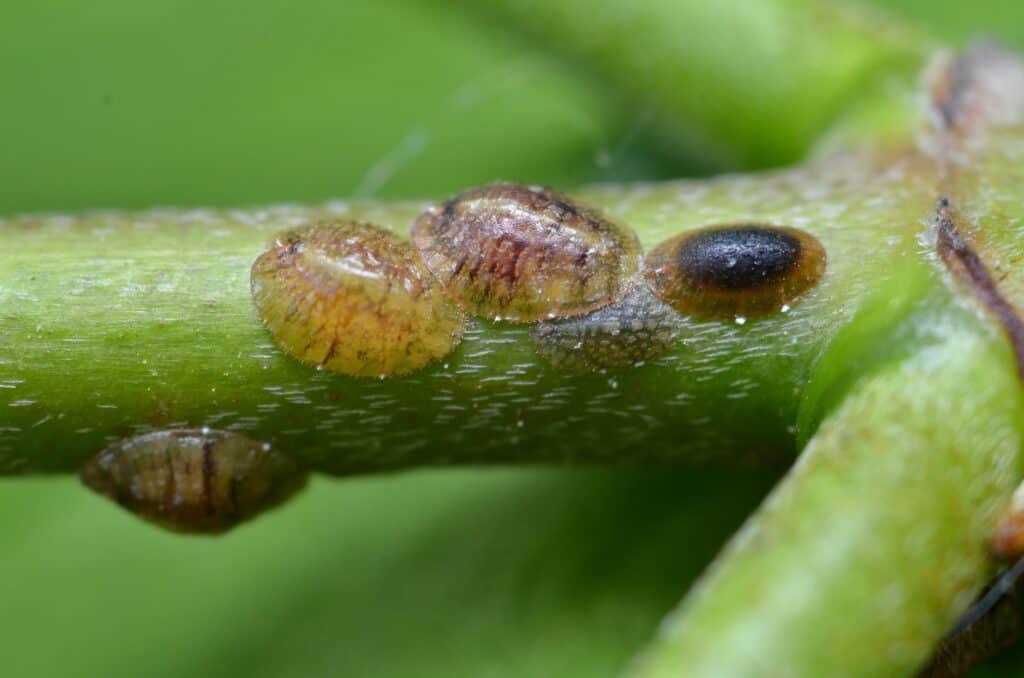
Here is a table describing the pest problems.
| Common Pests | Symptoms |
|---|---|
| Scale | 1. Brown bumpy and white cottony lumps can be seen on the undersides of the leaves 2. The leaves start wilting or drooping 3. Discoloration of leaves along with brown/white spots. |
| Aphids | 1. Curling and falling off leaves 2. Stunted growth |
| Mealybugs | 1. White cotton-like structure forms on the undersides of the leaves 2. Curling, wilting and falling off leaves |
| Fungus Gnats | 1. Discoloration of leaves. 2. Wilting, drooping and falling off leaves 3. Stunted growth |
| Spider Mites | 1. Discoloration of leaves 2. Stippled and yellowed leaves 3. Fine webbing on leaves might appear on the leaves. |
| Thrips | 1. Silver patches develops on the leaves and flowers 2. Sooty spots, brown and black patches appear on the leaves |
Solutions
- Apply Malathion to get rid of Mealybugs effectively and pyrethrin sprays for other bugs.
- Treating the plant by wiping it with 98% isopropyl alcohol will help rid scales, aphids, thrips, and other common pests.
- Consider solarizing the potting mix for soil nematodes or heating the small batches at 140°F in the oven.
- Scrape off scales on the stem and leaves using a blunt knife.
- Apply horticultural oil or Neem oil to kill the pests effectively.
- Otherwise, handpick the significant pests and wash the plant using a soapy water solution.
Preventive Measure
- Avoid bringing in plants that look suspicious. Quarantine the plant for at least two weeks.
- Avoid overwatering that may invite excessively humid conditions.
- Alternatively, install an electric humidifier to maintain the humidity level
- Wash the plant with clean water or soapy water solution every few weeks.
2. Horticultural Pest
Be wary of high humid conditions that may invite awful fungus and bacterial infestation.
Anthurium Rotundistigmatum is prone to common fungal and bacterial diseases like root rot, Pythium root rot, black nose disease, and bacterial blight.

Fungal Diseases
| Fungal Diseases | Causative Agent | Symptoms |
|---|---|---|
| Black Nose Disease | Olletotrichum gloeosporioides | Small black flecks appearance on the spadix indicating its rot. |
| Pythium (Phytophthora) Root Rot | Phytophthora nicotianae var. parasitica, Pythium splendens | Wilting of plant Browning leaves or black lesions Roots become mushy and soft |
Bacterial Diseases
| Diseases | Causative Agent | Symptoms |
|---|---|---|
| Bacterial Wilt | Ralstonia solanacearum | Bacterial wilt causes the leaves and stem to turn brown, especially during growing seasons. From the infected part, brown slime is released. |
| Bacterial Blight | Xanthomonas axonopodis pv. dieffenbachiae | The leaves turn brown. The blossoms to become dull. Water-soaked lesions along the leaf edges. |
Solutions
- Begin with quarantining the infected plants.
- In case of root rot, slide out the plant and cut the infected parts but do not forget to apply fungicide to the cut ends before transplanting.
- Apply fungicides like Medallion (fludioxonil) and Prostar (Flutolanil) to treat fungal infestations.
- Phytophthora and Pythium can easily be treated with dimethomorph and phosphorus acid.
- Apply fungicides containing copper, Benomyl, or Mancozeb to treat various diseases.
- Agrimycin is effective in treating bacterial infections.
Preventive Measures
- Strictly follow the watering schedule to avoid overwatering.
- Use an electric humidifier to maintain an ideal humidity level at all times.
- Avoid foliar water spray and over misting to prevent wetting the leaves.
- Inspect the plant every week in the growing season for fungal and bacterial signs.
FAQs About Anthurium Rotundistigmatum
How Long Could Anthurium Rotundistigmatum Live?
When properly cared for, a healthy Rotundistigmatum can very well live for at least ten years.
The plant’s livelihood depends on how well you care for them.
Otherwise, you can always propagate the plant to extend its life for another ten years.
Is Anthurium Rotundistigmatum Rare?
Many websites put out Anthurium Rotundistigmatum as rare plants but they are not rare.
You will find many of this Anthurium thriving in their wild Panama location but these plants come with a pricier tag.
How to Revive Dried Anthurium Rotundistigmatum?
If you witness your Anthurium severely dry and high in summer, you should immediately put it in treatment.
Place the plant on a pebble tray filled with water, or submerge the pot in a large water-filled container to moisten the soil.
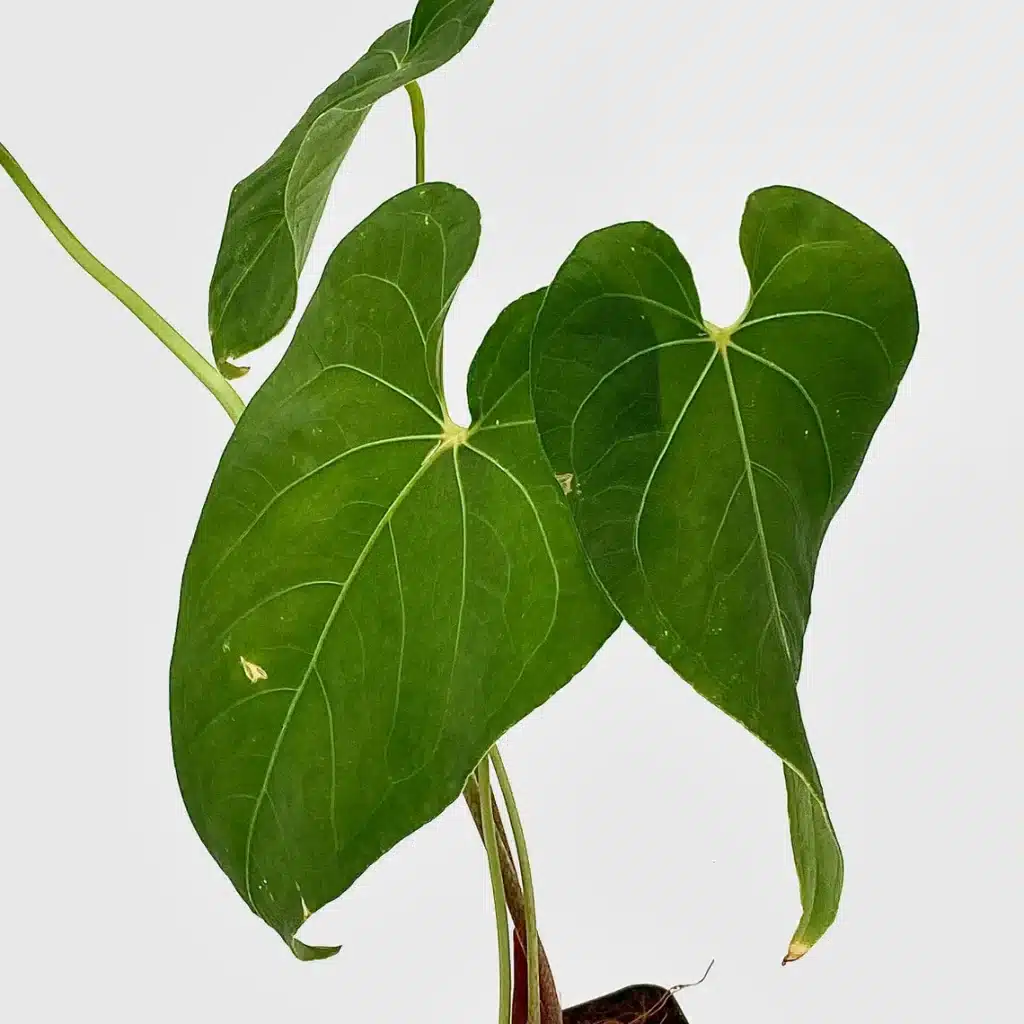
Conclusion
Rotundistigmatum is a gem of Anthurium houseplants that zests up the décor and cleanses the indoor air with minor efforts.
All you have to ensure is to keep them healthy and happy by regular watering, fertilizing, and providing warm yet humid conditions.
It takes a small amount of time each day as a low-maintenance plant.
Ensure to keep it happy to witness large, deep-green leaves round the year.
Read more about the care guide for Anthurium Metallicum, Cutucuense, and Brownii.


